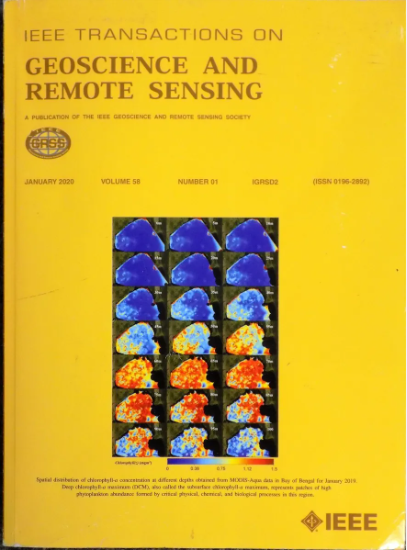基于全球导航卫星系统的双向和多向合成孔径雷达飞行任务相位同步实验验证与校准
IF 7.5
1区 地球科学
Q1 ENGINEERING, ELECTRICAL & ELECTRONIC
IEEE Transactions on Geoscience and Remote Sensing
Pub Date : 2025-04-15
DOI:10.1109/TGRS.2025.3557151
引用次数: 0
摘要
本文研究了多基地合成孔径雷达(SAR)中相位同步的关键问题。我们提出了一种基于全球导航卫星系统(GNSS)的同步技术的实验验证,该技术计划用于ESA即将到来的地球探测任务“和谐”。在该技术中,雷达有效载荷和GNSS接收机使用相同的主振荡器,雷达同步是通过来自GNSS接收机的载波相位数据的后处理和精确的基线确定(PBD)输出来实现的。本文提出了一种实验程序,作为该技术概念的一般证明,一种评估给定GNSS接收器可实现同步精度的方法,以及一种估计协方差矩阵以优化各种载波相位观测值之间权重的方法。我们提出了点对点估计和平滑方法。该技术在实验室环境中实现了相对同步误差低于515 fs ($1\sigma $),或在零基线情况下5.4 GHz雷达系统的1°,在短基线情况下5.4 GHz系统的1.5°以下,其中系统物理分离。本文章由计算机程序翻译,如有差异,请以英文原文为准。
Experimental Validation and Calibration of GNSS-Based Phase Synchronization for Bistatic and Multistatic SAR Missions
This article addresses the critical issue of phase synchronization in multistatic synthetic aperture radar (SAR). We present the experimental validation of a global navigation satellite system (GNSS)-based synchronization technique planned for use in ESA’s upcoming Earth Explorer mission, Harmony. In this technique, the radar payload and GNSS receiver utilize the same main oscillator, and radar synchronization is achieved through the postprocessing of carrier phase data from the GNSS receiver and precise baseline determination (PBD) outputs. This article presents an experimental procedure that serves as a general proof of concept of the technique, a method for assessing the achievable synchronization accuracy for a given GNSS receiver, and a method to estimate the covariance matrix to optimize the weighting between the various carrier phase observables. We present point-to-point estimation and smoothing approaches. The technique achieved in a laboratory environment relative synchronization errors below 515 fs ( $1\sigma $ ), or 1° for a 5.4-GHz radar system, in a zero-baseline scenario, and below 1.5° at 5.4 GHz in a short-baseline scenario, in which the systems are physically separated.
求助全文
通过发布文献求助,成功后即可免费获取论文全文。
去求助
来源期刊

IEEE Transactions on Geoscience and Remote Sensing
工程技术-地球化学与地球物理
CiteScore
11.50
自引率
28.00%
发文量
1912
审稿时长
4.0 months
期刊介绍:
IEEE Transactions on Geoscience and Remote Sensing (TGRS) is a monthly publication that focuses on the theory, concepts, and techniques of science and engineering as applied to sensing the land, oceans, atmosphere, and space; and the processing, interpretation, and dissemination of this information.
 求助内容:
求助内容: 应助结果提醒方式:
应助结果提醒方式:


